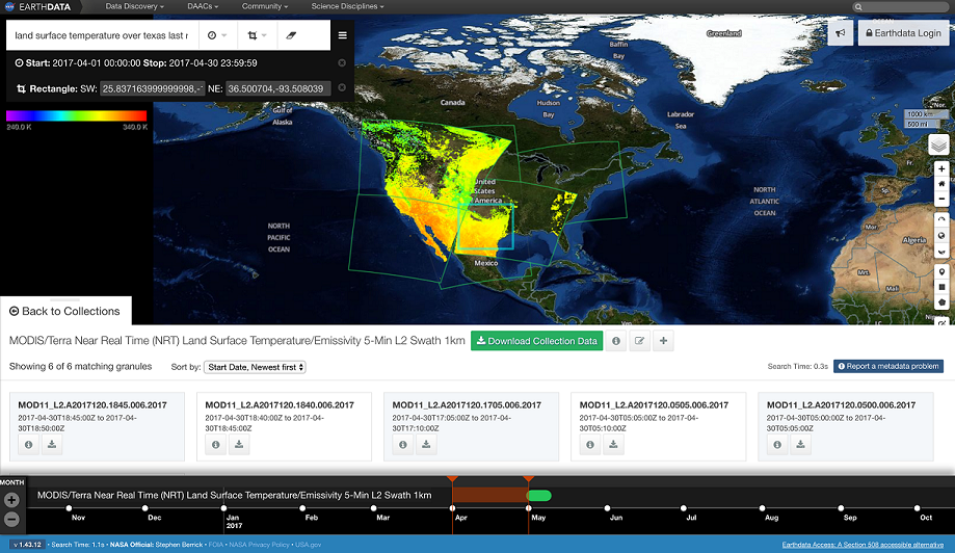Two key elements of NASA’s Earth Observing System Data and Information System (EOSDIS) are now running in Amazon Web Services—the Common Metadata Repository (CMR) and Earthdata Search. The evolution of CMR and Earthdata Search to run in the cloud is part of an ongoing effort designed to enable EOSDIS and the Earth Science Data and Information System (ESDIS) Project to effectively manage the ever-growing amount of Earth science data in the EOSDIS archive and efficiently provide these data to users.
EOSDIS Data and Services in the Cloud
The CMR is the central repository for NASA Earth science metadata and enables sub-second searches through the entire EOSDIS archive by client systems such as Earthdata Search. The CMR was deployed to the cloud in April 2017. Earthdata Search is the primary application developed by the ESDIS Project for data search and discovery and was deployed to the cloud in September 2016.
Moving the CMR, Earthdata Search, and other EOSDIS data and services to run in the cloud is a natural evolution given the expected unprecedented amount of Earth science data that soon will be added to the EOSDIS archive. From its current cumulative archive size of almost 22 petabytes (PB), the volume of data in the EOSDIS archive is expected to grow to almost 247 PB by 2025, according to estimates by NASA’s Earth Science Data Systems (ESDS) Program. Over the next five years, the daily ingest rate of data into the EOSDIS archive is expected to reach 114 terabytes (TB) per day, with the upcoming joint NASA-Indian Space Research Organisation Synthetic Aperture Radar (NISAR) mission (scheduled for launch by 2021) contributing an estimated 86 TB per day of data when operational.
Having EOSDIS data and services in the cloud brings numerous benefits for both data users and NASA’s EOSDIS, including:
- Direct access to data, by removing the need to download volumes of data for use;
- Rapid deployment, allowing data users to bring their algorithms and processing software to the cloud and work directly with data in the cloud;
- Scalability, by providing for the size and use of the archive to expand easily and rapidly as needed;
- Flexibility, through enabling mission needs to dictate data operating systems, programming languages, databases, and other criteria to ensure the best use of mission data; and
- Cost effectiveness, by allowing EOSDIS and NASA to pay only for the storage and services actually used.
Other EOSDIS services are being tested for evolution to the cloud, including Global Imagery Browse Services (GIBS). GIBS provides quick access to over 400 satellite imagery products, which can be viewed using client systems such as the EOSDIS Worldview application. GIBS is expected to evolve to the cloud starting in 2018. In addition, a prototype system addressing capabilities of the discipline-specific EOSDIS Distributed Active Archive Centers (DAACs), including data ingest, archive, distribution, and management, is being tested for evolution to the cloud. For more detailed information about overall EOSDIS cloud efforts, please see EOSDIS Cloud Evolution on the Earthdata website.
Evolving the CMR and Earthdata Search to the cloud is the beginning of a new era in providing access to EOSDIS data and services. As the EOSDIS archive grows significantly over the next few years, the result of this evolution will be the ability for data users to do more with this tremendous resource than ever before.
Published June 21, 2017
